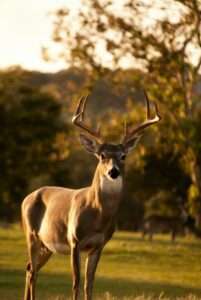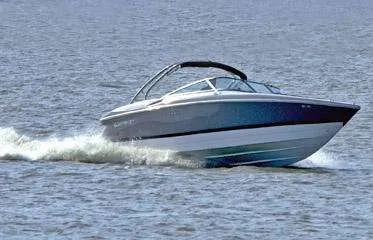PRATT – As the days get shorter and weather gets cooler, the breeding season for deer will begin. Traversing pastures, roadways, rivers and streams – male white-tailed and mule deer will begin a nearly month-long quest for suitable mates, stopping for very little, including motorists.
Commonly referred to as the “rut,” this time of year marks the distinct period when deer-vehicle collisions are most frequent, and the Sunflower State is no exception. That’s why the Kansas Highway Patrol, Kansas Department of Transportation, Kansas Department of Wildlife and Parks and AAA Kansas offer helpful tips that can help drivers safely navigate Kansas roadways and potentially avoid collisions with deer.
“If you are unfortunate enough to have a deer enter the highway in front of your car, it is best to hit the animal and not swerve to avoid it,” said KHP Lieutenant Candice Breshears. “Often, we find more serious crashes occur when you swerve to miss the deer, potentially losing control of your vehicle, leaving the road or veering into oncoming traffic.”
While the vast majority of deer-vehicle collisions do not involve serious injury, data collected by KDOT indicates that from 2011-2019, 51 people have been killed in Kansas crashes involving deer.
“In addition to potentially causing human injuries and loss of life, deer collisions often cause significant vehicle damage that can lead to large expenses for the vehicle owner if not properly insured,” said Shawn Steward, public and government affairs manager for AAA Kansas. “Of the animal strikes reported by AAA Insurance policy holders in 2020, the average cost per claim was nearly $5,500, an increase of more than $1,000 per claim from 2019.”
Steward attributes the higher repair costs to advanced driver assistance technology and the expensive sensors and calibration requirements in newer vehicles.
To avoid incurring costly vehicle repairs, or worse, state experts offer these helpful tips:
Be especially watchful at dawn and dusk, when deer are more active.
If you see one deer, expect others, as deer seldom travel alone.
Drive at a reduced speed and be extra vigilant near wooded areas or green spaces, such as parks and golf courses, and near water sources such as streams and ponds.
Deer crossing signs show areas where high numbers of vehicle/deer crashes have occurred in the past; heed these warnings.
Use bright lights when there is no oncoming traffic, and scan the road ahead for the reflective eyes of deer.
Do not swerve to avoid hitting a deer – the most serious crashes sometimes occur when motorists veer and collide with another vehicle or run off the road and hit an obstacle.
Always wear a seat belt and use appropriately-fitting child safety seats, as these are the best defenses in a crash.
Honk the vehicle’s horn using one long blast, as this may frighten large animals, such as deer, away from the roadway.
Lastly, if a collision occurs, move the vehicle to the shoulder of the roadway, if possible, and call law enforcement – KHP dispatch at *47, the Kansas Turnpike at *KTA and local law enforcement at 911.
Anyone involved in a deer-vehicle crash resulting in personal injury or property damage that totals $1,000 or more is required to immediately report the incident to the nearest law enforcement agency. Failure to report any vehicle crash is a misdemeanor and may result in suspension of driving privileges.
To remove a deer carcass, or any part of a deer, from a crash site, a salvage tag must first be obtained. Salvage tags can be issued by KHP troopers, sheriff’s deputies or KDWP game wardens.
This fall season, motorists can ensure the “holiday traffic” they encounter remains as safe as possible, for humans and deer, by staying alert and simply slowing down.





